This article runs in a section of The Tyee called ‘What Works: The Business of a Healthy Bioregion,’ where you’ll find profiles of people creating the low-carbon, regenerative economy we need from Alaska to central California. Magic Canoe and the Salmon Nation Trust are major funders.
Behind the Sechelt hospital, beneath the transmission lines of a BC Hydro substation, a transformation is sprouting.
Tidy gravel paths intersect carefully tended rows of vegetables and berries. Shrubs and fruit trees line cedar fencing, and the hillside leading up to the hospital displays an abundance of native wildflowers in bloom.
If you walked through this site just a few years ago, the land would have told a very different story.
The seven-acre site that now hosts the Salish Sea Regenerative Farm Society was once filled with invasive plants, bramble, and garbage, said Aaron Joe, a member of the shíshálh Nation and one of the society’s founders.
Over the past three years, the previously barren land has been converted into farmland using local compost for soil.
“I’d just been thinking about this for a long time, this idea of land restoration,” said Joe, who also runs a local composting company, Salish Soils.
Joe founded Salish Soils in 2010 in Sechelt on the Sunshine Coast, a district of just over 32,000 people located on the southern mainland of British Columbia. Compost sourced for the company, and now the farm, comes from both industrial and residential green waste.
The Salish farm provides a glimpse into what can be for residents who rely heavily on imported food. While there is no shortage of farmland on the Sunshine Coast, only three per cent of food consumed on the Sunshine Coast is locally produced, according to the Island Coastal Economic Trust.
That is a high disparity. But the coastal community is not alone.
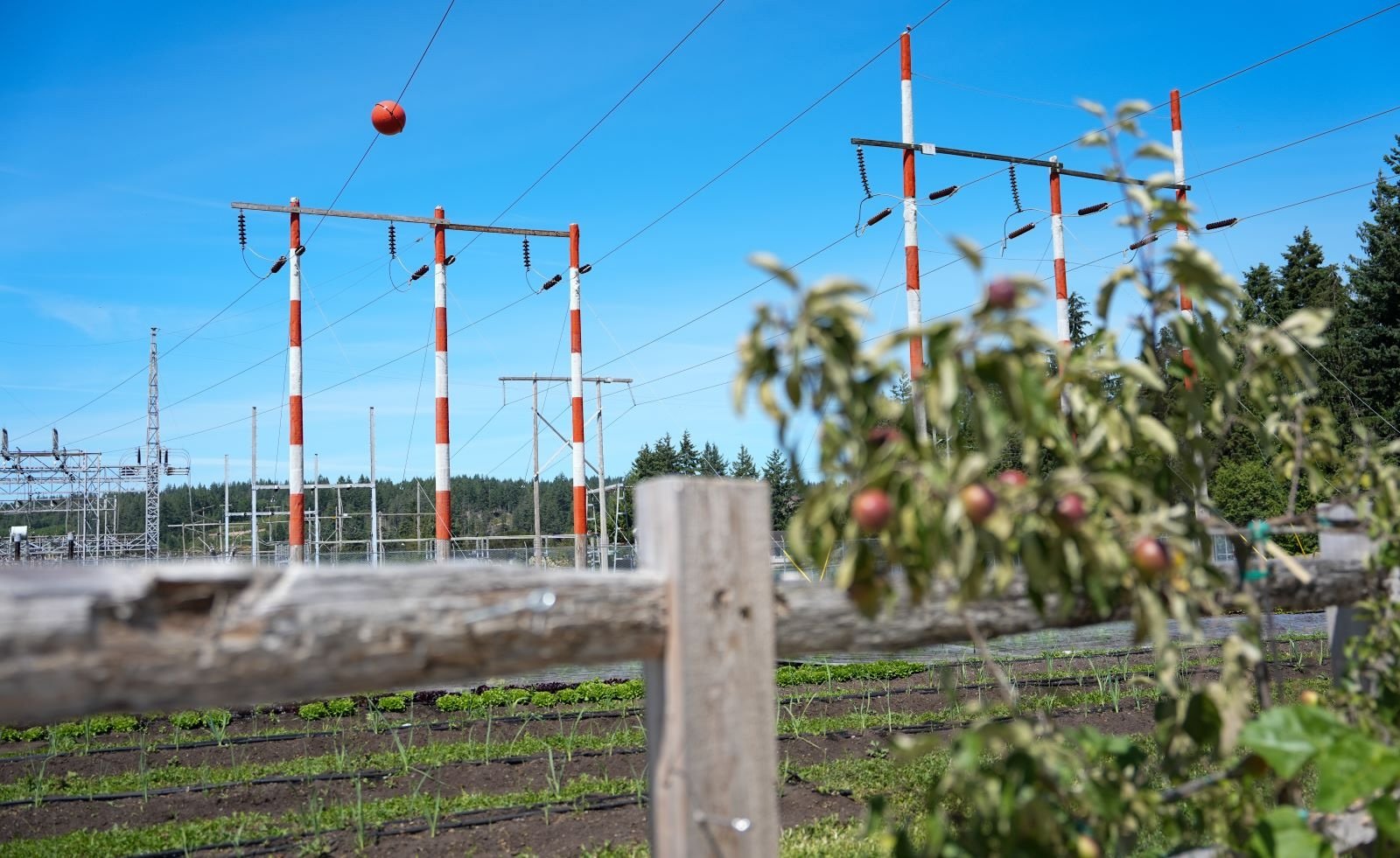
Local food makes up less than 10 per cent of available food on Saltspring Island, which has a population of roughly 11,000 people living between Vancouver Island and Vancouver. Slightly farther south, it’s a similar situation on Washington state’s San Juan Islands. About four per cent of food that’s purchased in the San Juans is grown on the islands, a local county official said last year.
Inspiration to buck that trend on the Sunshine Coast came in 2020, when Joe and a few other community members participated in a global climate solutions program. They were required to come up with a solutions-based community initiative.
“I was so excited about it,” Joe said. “I already knew what we were going to do.”
In 2021, they formed the not-for-profit Salish Sea Regenerative Farm Society and then secured a lease from the shíshálh Nation, whose territory the land is on.
Then they got to work, volunteering their time to clear and clean the site, and donating truckloads upon truckloads of compost from Salish Soils to regenerate the growing capacity of the land.
Just a few years in, the farm is now one of the largest food producers on the Sunshine Coast, growing staple crops like potatoes, garlic, tomatoes, peppers, and strawberries. They sell that product to a variety of customers, including the hospital, the nation, a nearby IGA grocery store and local farmers markets.
“The long-term horizon for this is that we become food sovereign on the whole Sunshine Coast,” Joe said.
The Sunshine Coast’s reliance on imports is a multi-faceted problem.
Much of it has to do with land access and water, said Casandra Fletcher, the executive director of One Straw Society, a food sovereignty organization based in Roberts Creek that buys some of Salish’s produce.
Like most of the West Coast, the Sunshine Coast is a hot real estate market. The cost of farmland makes it basically impossible to survive on income from farming alone. And while there is plenty of winter rainfall, Fletcher said a lack of water storage infrastructure results in summertime water shortages that affect many local farmers in their busiest season.
The Salish Sea Regenerative Farm Society is unique. As a non-profit, it receives grants to develop the farm and has access to a private well — enabling it to avoid the summertime water shortages that normally cause problems for coastal farms.
“What they’ve been able to accomplish in three years is extraordinary,” Fletcher said.
That said, it’s been far from easy.
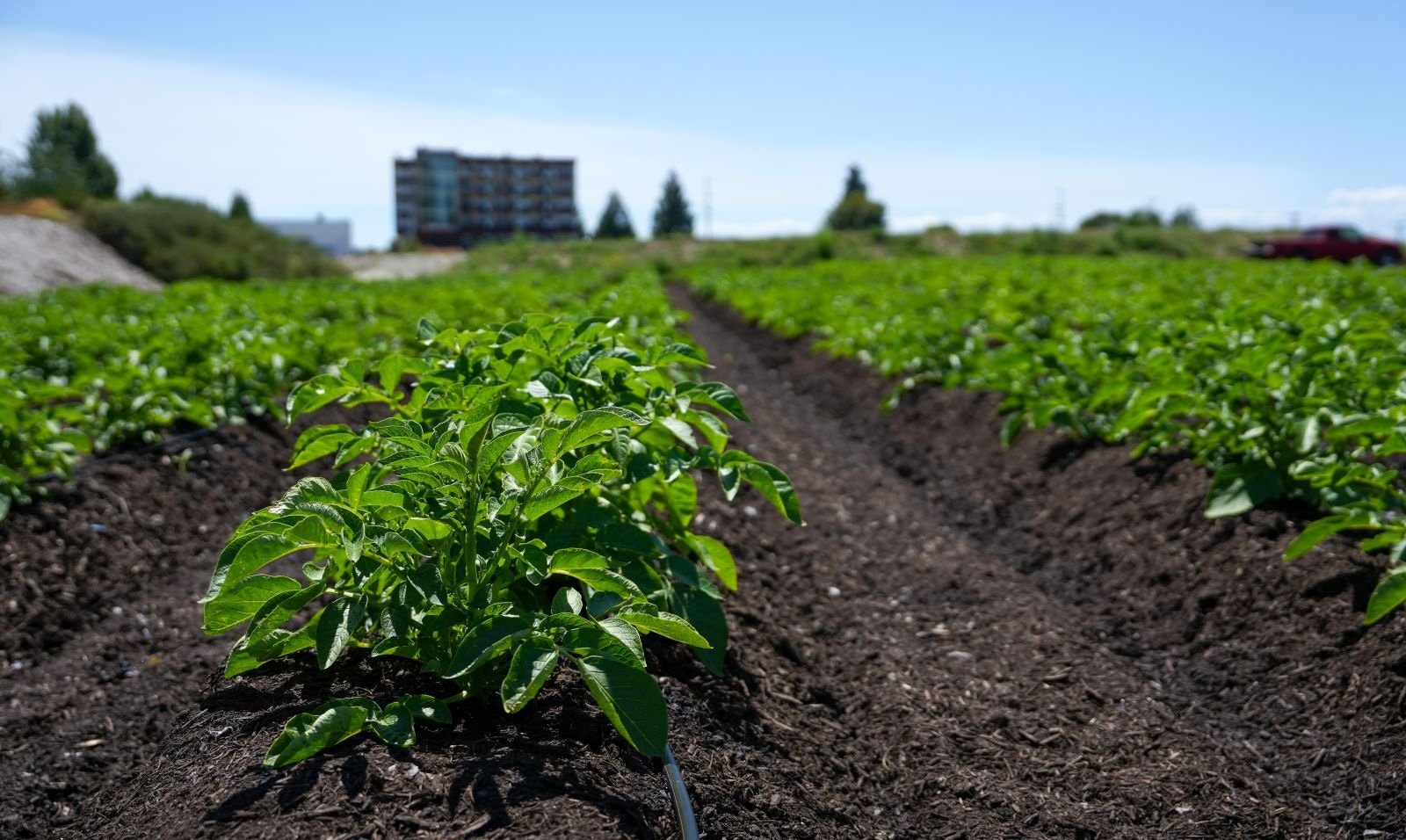
Converting industrial land to an agriculturally viable site comes with unique challenges, said Jack Edgar, farm manager.
There have been growing pains related to the site, which they anticipated, he said. Those included permitting requirements from having to work around a FortisBC high-pressure gas line and the Sunshine Coast Regional District’s water line.
Then there are issues you wouldn’t expect.
Despite its location beneath power lines, the farm does not yet have access to electricity. “It’s like dying of thirst in the middle of the ocean,” Edgar joked. “You’re surrounded by water but you can’t drink it.”
No electricity means no cold storage, so farmers markets have been an enormous challenge for any crop other than potatoes and garlic.
Then, applying the principles of regenerative agriculture, which are primarily based around soil health and minimizing tillage, has proved to be a little difficult on a site that was basically sand, gravel, and invasive weeds.
Edgar said the intense weed pressure on the site has resulted in the team using tillage, otherwise known as mechanically made soil, until they can get the weeds under control.
“Conventional regenerative farms rely on herbicides often to manage their weeds and to minimize their tillage, so it’s kind of like, what’s the lesser of two evils?”
This is where apple cores and banana peels from the region’s residents come in handy.
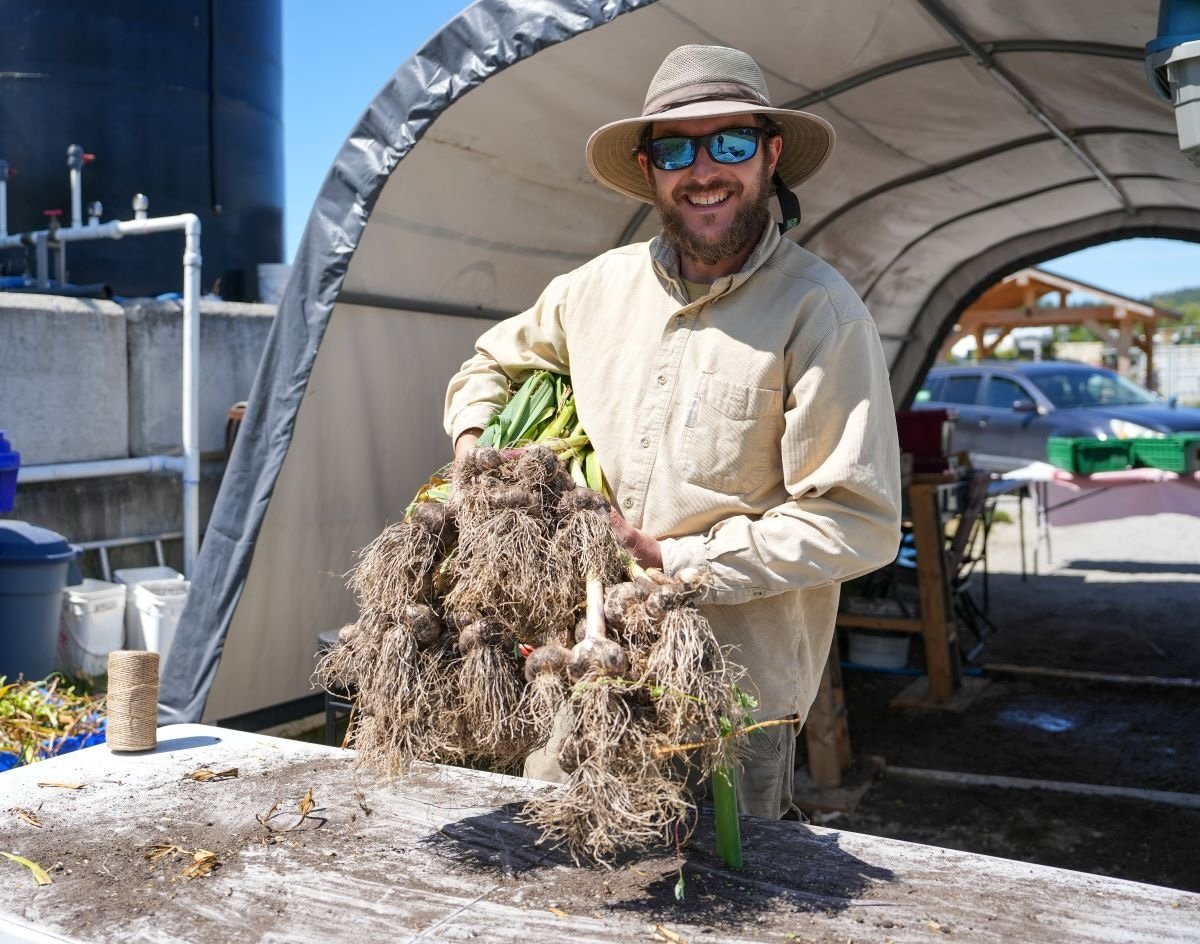
There are limited options for soil amendments and plant nutrition on the Sunshine Coast, Edgar said, as there’s no large-scale animal agriculture nearby to provide manure. Salish Farms has instead relied on repeated applications of compost to make the once barren land productive. It’s a process that is also more environmentally friendly.
While manure does provide nutrients for soil, a 2022 research paper in the journal Water Research notes that manure from livestock production contains pathogens that can negatively affect nearby waterways.
Compost is a more stable form of nutrients and organic matter, Edgar said, with a comparatively smaller risk of pathogens or nitrates leaching into waterways and groundwater tables.
“Compost from food waste is one of our best ways to enable resource circularity,” Edgar said. “This site is really a demonstration of that resource circularity in action.”
Following Indigenous guidance
Composting and grants aside, finding steady revenue remains one of the farm’s biggest short-term goals.
Edgar said some inefficiencies from the project finding its footing — and the organization’s efforts to pay a living wage whenever possible — have resulted in operating costs that have proven challenging to cover with just vegetable sales.
Like many other farms, Salish is planning to expand its activities to diversify its income streams.
Joe wants to build a long table to host on-farm dinners and events. There has been talk of bringing on food trucks or breweries for mountain bikers who want to grab a bite to eat after the trails.
To that end, he has made beautification of the land a priority alongside food production, and it’s working. The farm has already become a regular walking path for locals, and Edgar said bikepackers have found it and begun using the space as a rest stop.
“To be able to take something right beside a Hydro substation, which is generally pretty ugly and pretty industrial, and totally beautify it out so that people would want to come down here and have a dinner, I think it’s such an important piece,” Joe said.
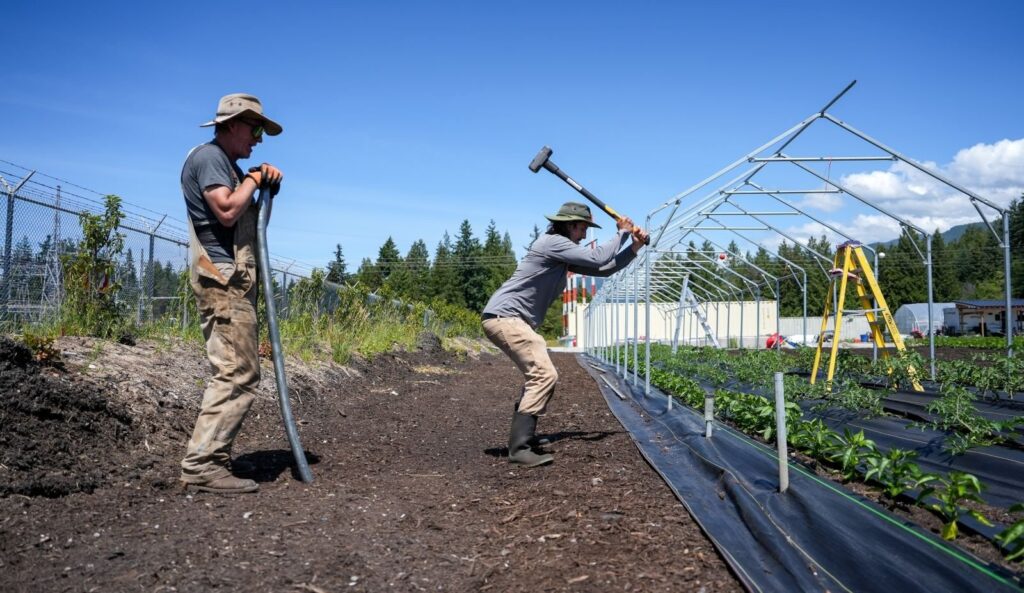
This past spring, the farm transitioned to an entirely First Nations board, and they are working on re-Indigenizing the landscape, a process that includes incorporating Indigenous farming practices alongside western ones.
They also want to ensure that the shíshálh Nation feels a sense of ownership of the project and open access to the property. For example, the farm runs a youth summer jobs program in partnership with the nation, where youth can work on the farm through the summer to gain skills.
To Joe, the moves symbolize that the project is not just about land regeneration, but also about the potential for shíshálh Nation to play a significant role in developing food security for the region.
“It’s such a great example of what reconciliation looks like,” Joe said. “Not just me being Indigenous and having only Indigenous people working here, but all of us working here, all of us working towards a better future.”
Restorative land use
Long term, Joe’s dreams extend beyond the power lines.
In 2021, the B.C. government transferred 616 hectares of land known as the “gravel lands” back to the shíshálh Nation. Located just above the farm, the land is currently an active gravel mine operated by Heidelberg Materials on lease from the nation.
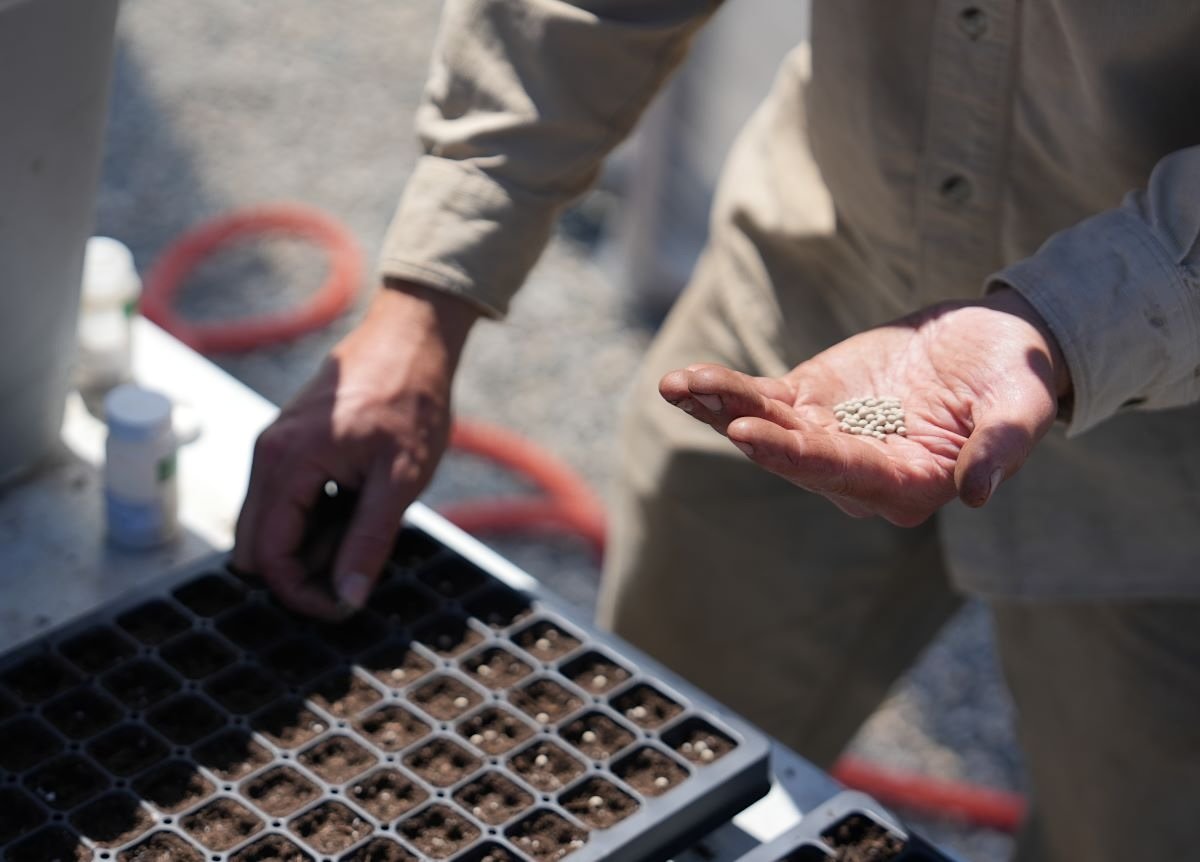
Joe believes that once the mine land is infilled, it won’t be particularly useful for building construction due to ground instability, but it could be converted to agricultural land.
In that regard, the farm’s current site behind the hospital is being treated as somewhat of a testing ground for what could be a much larger-scale food sovereignty project on the gravel lands.
Joe hopes the model could be replicated elsewhere.
“When I look at it from an Indigenous perspective, we’re watching our land get damaged every day,” he said.
While he understands the necessity of activities like mining and forestry — and the jobs they provide to adjacent communities — he believes the path forward can and should include land restoration alongside development.
“I’m not saying this is the model,” he said. “There are many models, but this is one of them.”
“As we are taking back control of our territories,” Joe said, “there has to be a component of what we do that is in the regeneration of our land.”

